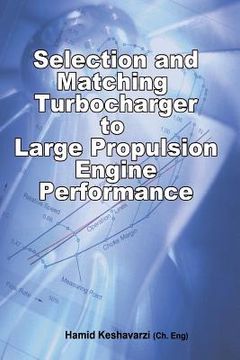Share
Selection and Matching Turbocharger to Large Propulsion Engine Performance (in English)
Hamid Keshavarzi
(Author)
·
Degarandishan Publishing House
· Paperback
Selection and Matching Turbocharger to Large Propulsion Engine Performance (in English) - Keshavarzi, Hamid
$ 11.99
$ 14.99
You save: $ 3.00
Choose the list to add your product or create one New List
✓ Product added successfully to the Wishlist.
Go to My WishlistsIt will be shipped from our warehouse between
Monday, July 08 and
Tuesday, July 09.
You will receive it anywhere in United States between 1 and 3 business days after shipment.
Synopsis "Selection and Matching Turbocharger to Large Propulsion Engine Performance (in English)"
To buy this book, please send email to: globalbooksellers@gmail.com degarandishanpublication@gmail.com The diesel engine is a compression-ignition internal combustion heat engine which can be operated in both the four- and two-stroke cycle. This high efficiency translates to good fuel economy and low greenhouse gas emissions. Pressure charging is the process of force-feeding air into the combustion chamber of the diesel engine. All marine propulsion diesel engines have an air-charge system with an exhaust driven turbine. This is referred to as turbocharging. A modern turbocharger has simple, modular design, aimed at improving overall life cycle. Developments in turbocharger's component design and manufacture all contribute to this goal. The key design criteria include: -High specific flow rates -High efficiencies and reliability -Low noise emissions -Ease of maintenance and mounting -Long-service life When comparing similar rated engines, in terms of environmental protection, one fitted with a modern turbocharger will consume some 10-15% less fuel while reducing gaseous emissions by equally significant amounts. However it is not just in fuel efficiency where environmental protection benefits lie, in noise and vibration for example, modern turbocharger has succeeded in lowering noise emissions to less than at one meter distance and has improved vibration characteristics, by having kept the natural frequencies well above any exciting frequencies from the diesel engine. In connection with turbocharger matching to marine propulsion diesel engine, years of experience have enabled makers of turbocharger to develop a simple, semi-empirical method for selecting the optimum turbocharger for any propulsion engine, turbocharging system, output data and ambient conditions, at low computation cost and with sufficient accuracy. The calculation of turbocharging system with pulsating admission of the turbine is based on an empirical 'pulse factor' and can thus be reduced to a simple computation of a system with 'equivalent constant-pressure admission' of the turbine. All the empirical characteristic variables are so defined that they can be determined from the usual, available numerical data from acceptance tests and turbocharger adaptation tests, and also by step-by-step computation of real working cycle.
- 0% (0)
- 0% (0)
- 0% (0)
- 0% (0)
- 0% (0)
All books in our catalog are Original.
The book is written in English.
The binding of this edition is Paperback.
✓ Producto agregado correctamente al carro, Ir a Pagar.

